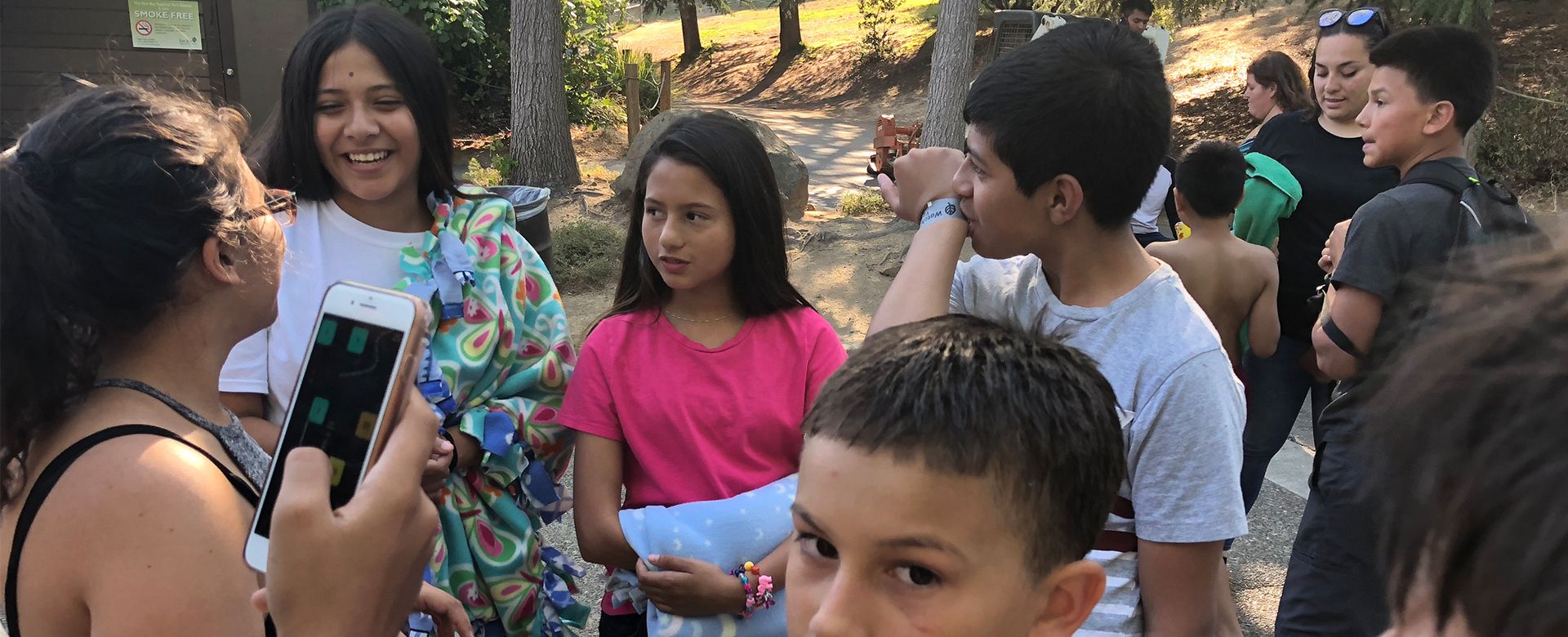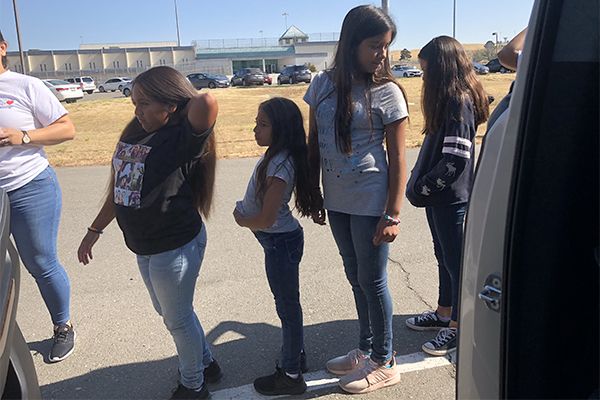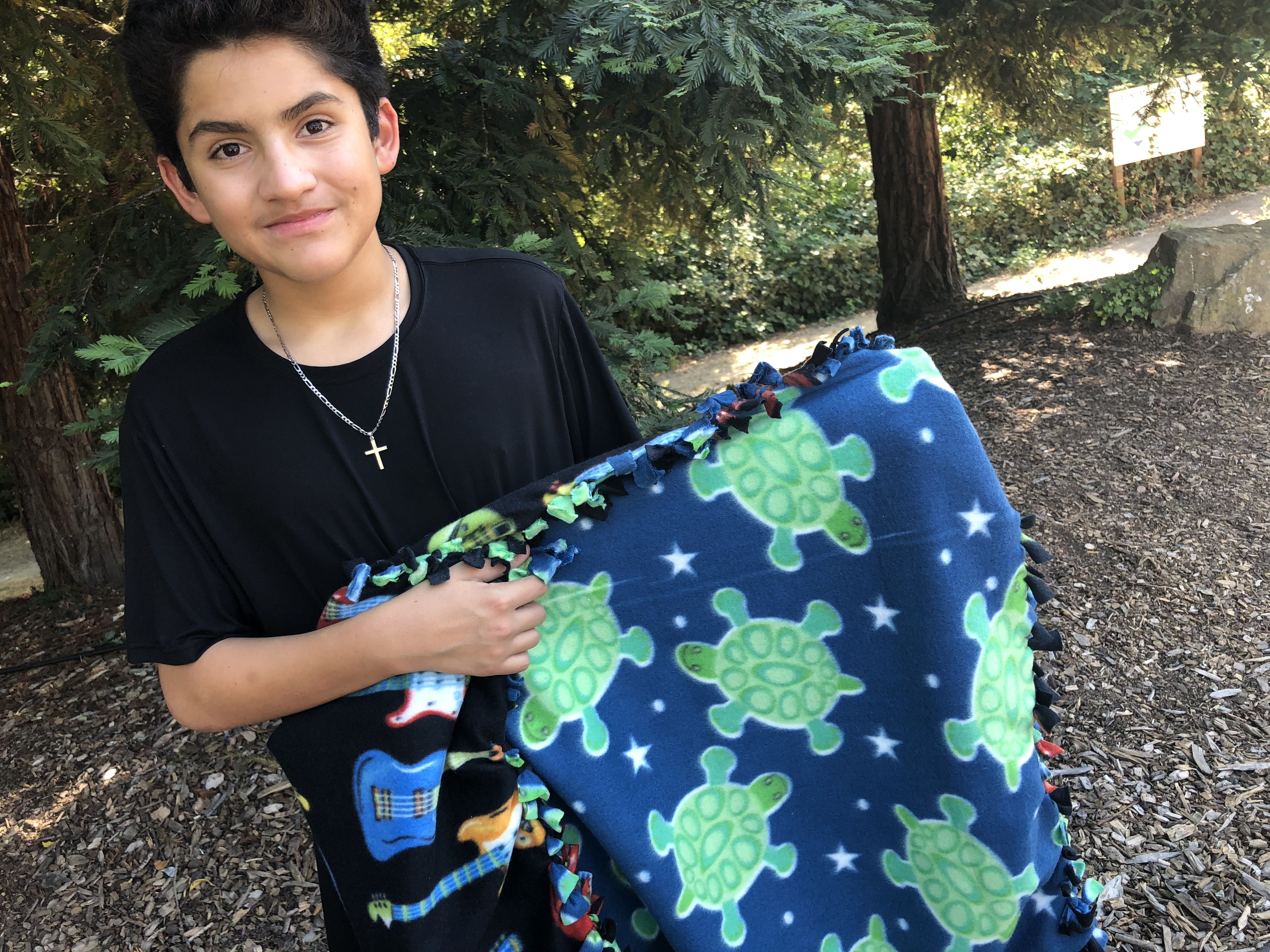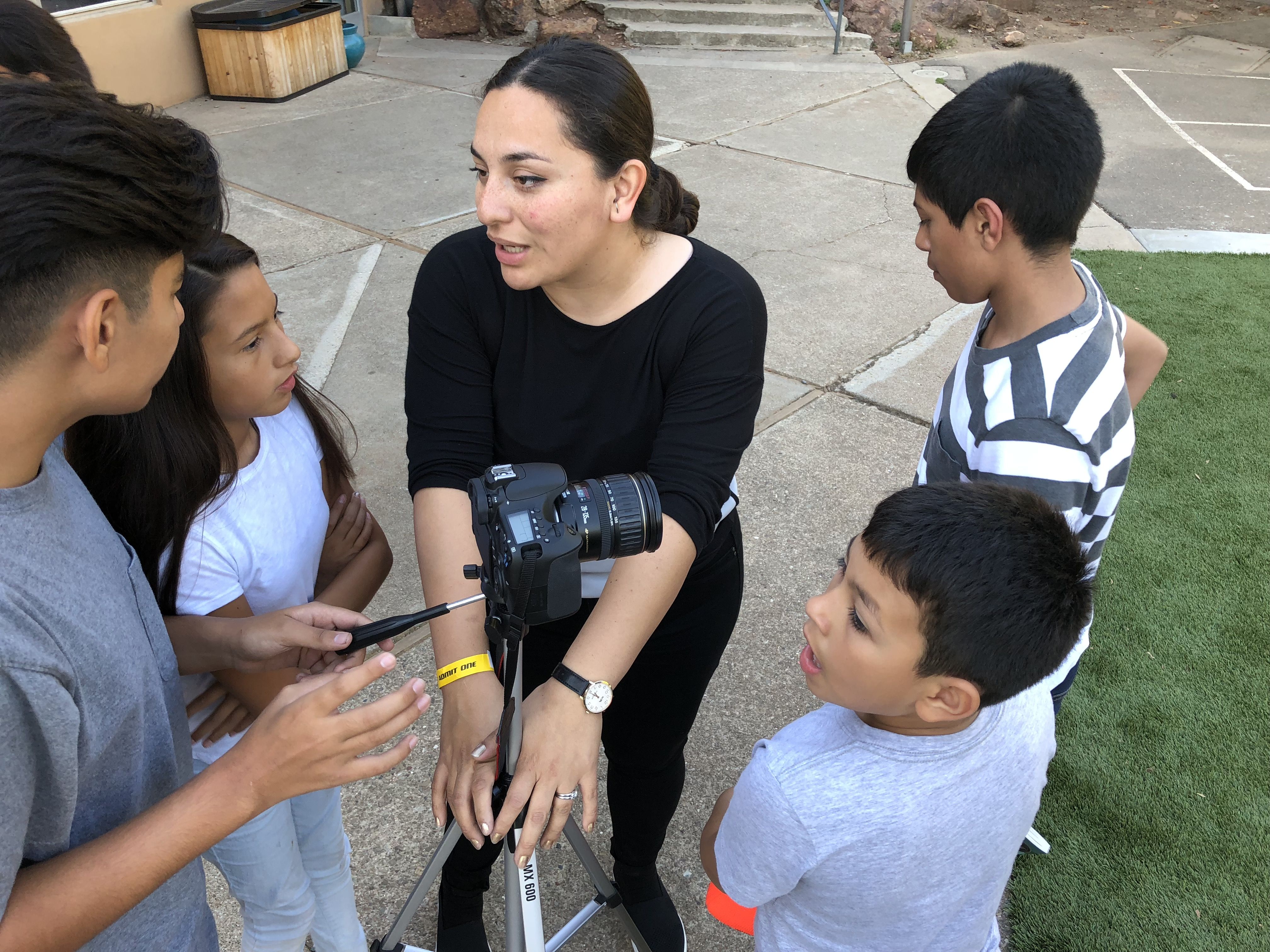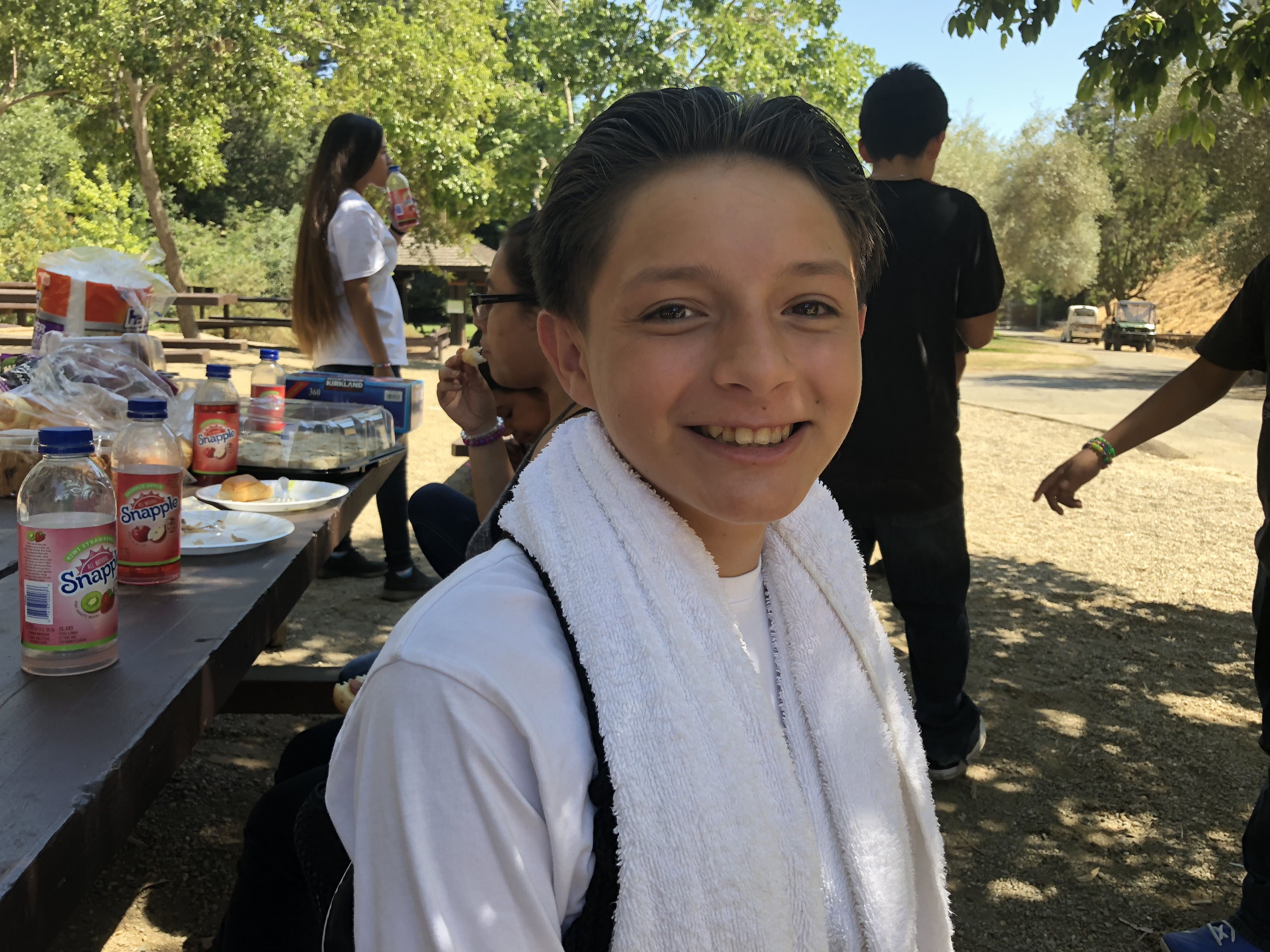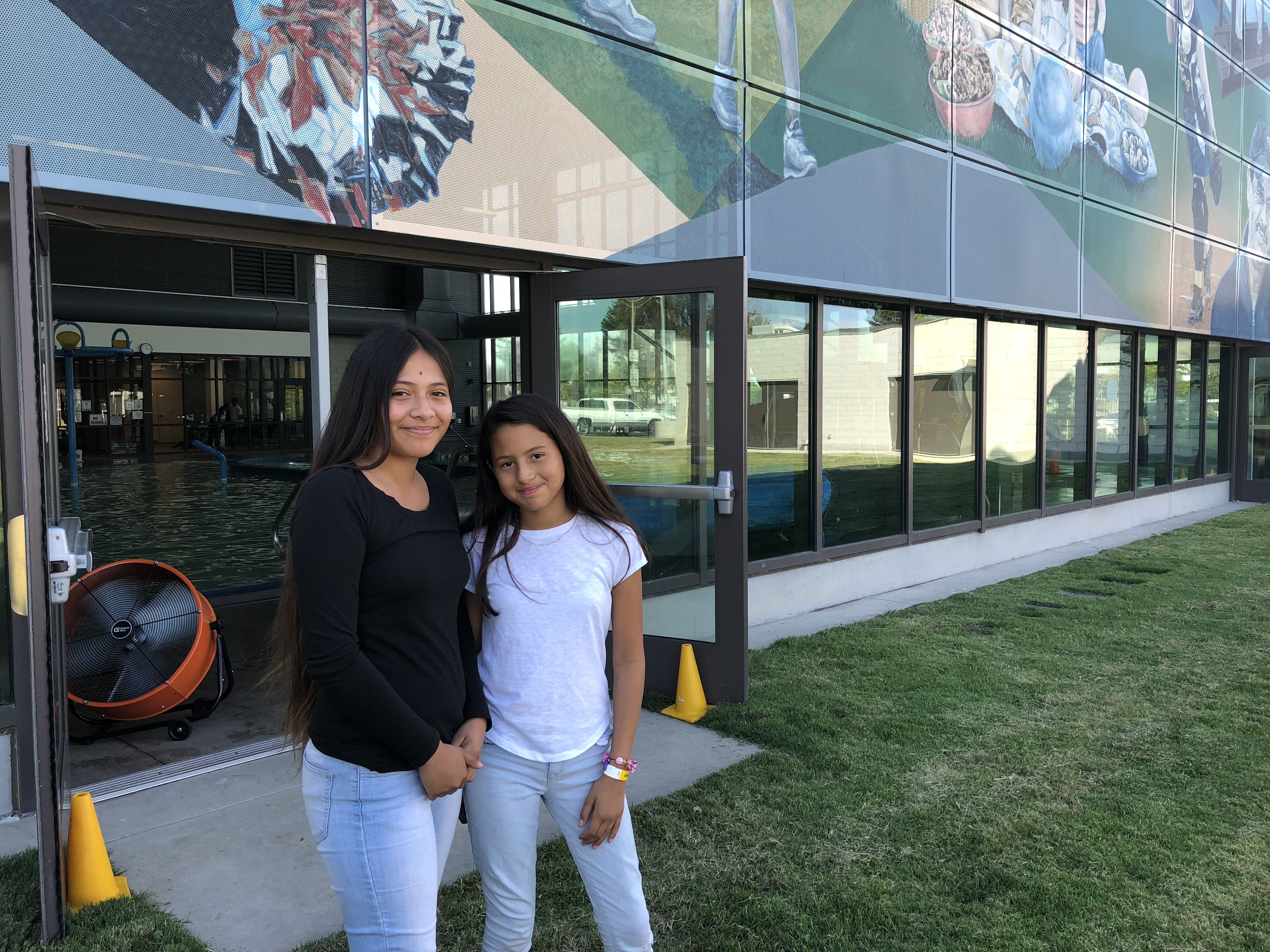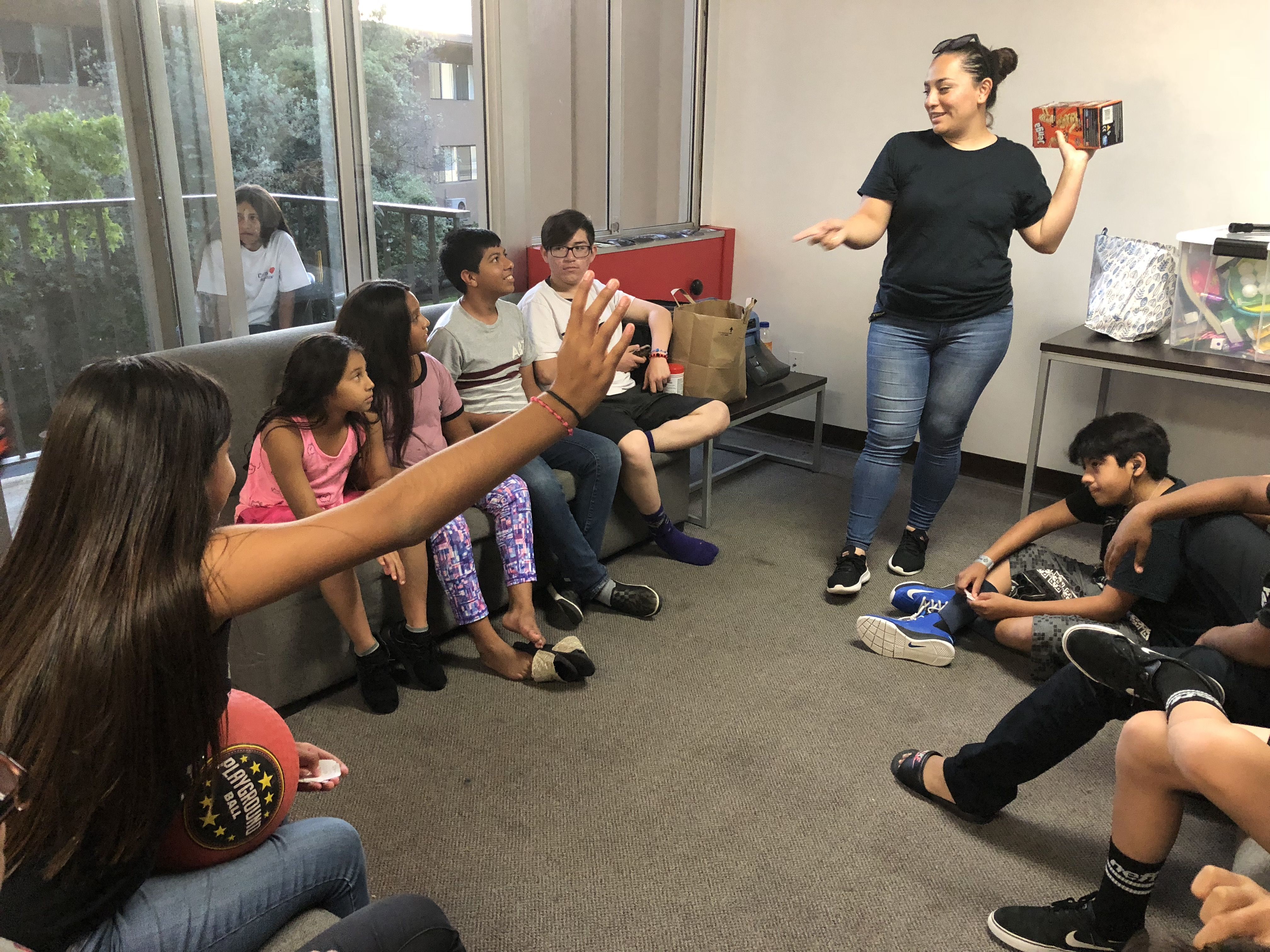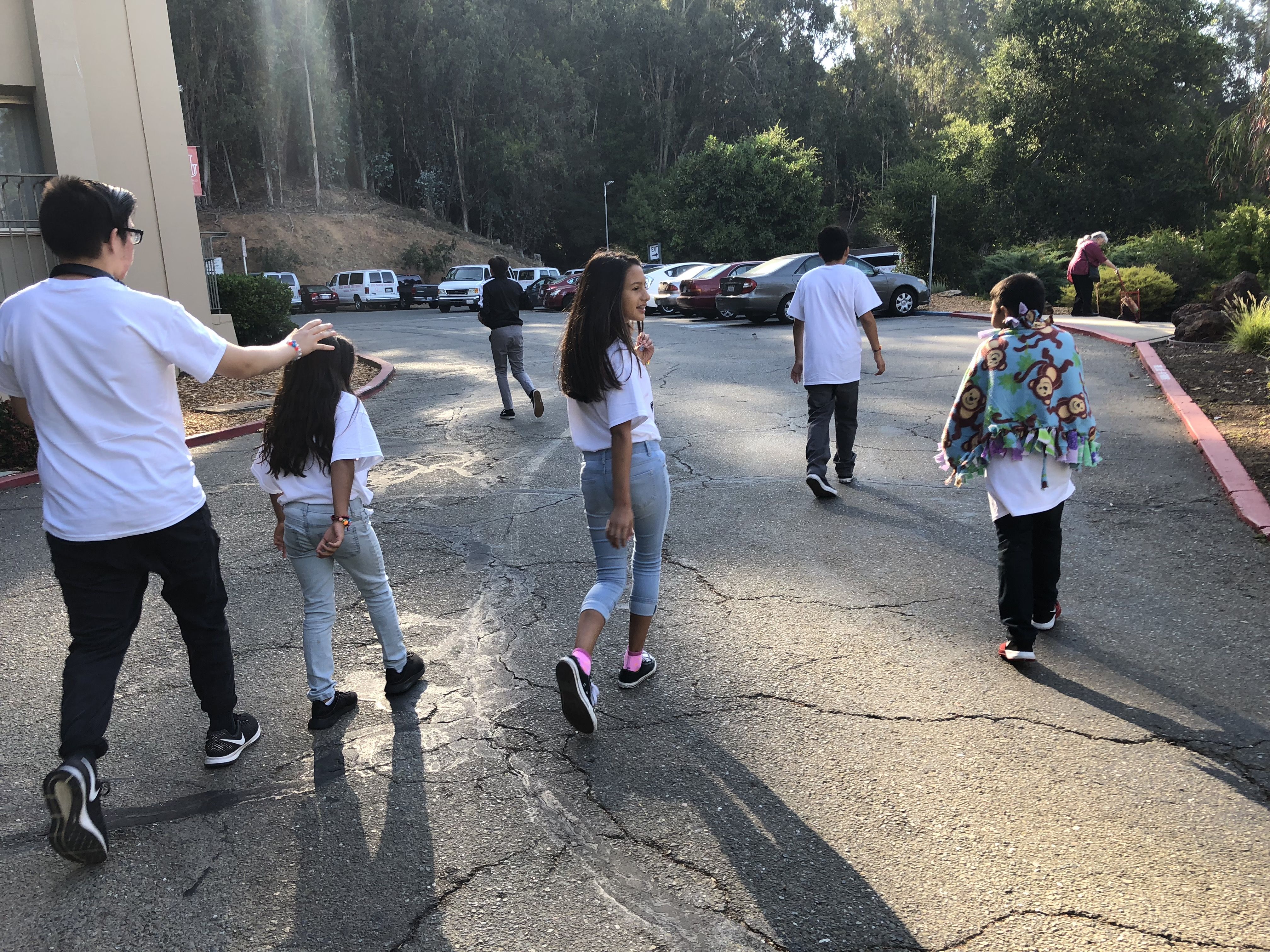Oakland, California — Destiny S. can’t stand the crowd or the smell of chlorine, which is why she’s sitting with a friend on the lawn outside the East Oakland Sports Center. While her peers enjoy the center’s indoor pool, Destiny, 13, takes time to reflect. “I feel like we relate to each other,” she says of the other kids. “It’s hard on all of us, but we just have to take care of one another while we’re here.”
“Here” is Camp Suzanne, a weeklong summer camp for kids ages 8 to 14 with at least one thing in common: Their moms are in prison at the Federal Correctional Institution in nearby Dublin, California. This year’s camp has 15 kids, including five pairs of siblings.
In the United States, some 2.7 million children have a parent in jail or in prison, according to a 2010 report from the Pew Charitable Trusts. That’s one in every 28 kids. A 2016 Annie E. Casey Foundation report says an estimated 5.1 million kids have at some point in their lives been impacted by parental incarceration. In California, 503,000 are affected. That’s more than in any other state.
Across the country, several summer camps and year-round programs support kids whose parents are incarcerated, including Camp Agape, in Hawaii; New Day Camp, in Oklahoma; and Children of Inmates, in Florida. But along with Hope House, in Washington, D.C., and the Place 4 Grace, also in California, Camp Suzanne is one of just a few programs to take kids on extended visits to see moms and dads in prison. The program was launched in 2015 by the Center for Restorative Justice Works (CRJW), a nonprofit organization based in Los Angeles whose mission is to unite families separated by incarceration.
For people like Destiny, Camp Suzanne presents an uncommon opportunity. “This program means a lot, because it gives me and my sister time to bond with our mom,” she says. In July, I joined Destiny and her fellow campers for part of the trip.
An Emotional Week
At 6 a.m. on a Sunday, kids meet camp coordinator Astrid Villagran and a second driver in the parking lot of an Albertsons supermarket on Crenshaw Boulevard in Los Angeles. Another group waits for a 12:30 p.m. pickup at a Walmart in Los Baños. Transportation, food, and housing are provided free of charge. (Often, prisons are far from where families live, and many people don’t have the time and money needed to visit loved ones.) From start to finish, with a few stops along the way, it’s a 10-hour drive to Oakland.
That’s where Carlos M., 14, and his sister, Adrianna, 11, join the group. They’re here from Nevada. “Even though me and my sister saw her a couple of months ago, it’s still pretty emotional that we get to spend a whole week [together],” Carlos tells me as we sit in the hall outside his dormitory room at Holy Names University, where I meet the group midweek. Located in Oakland’s wooded hills, it’s Camp Suzanne’s home base.
Visiting days at the Dublin prison are Saturdays, Sundays, and holidays. But Camp Suzanne families get Monday through Friday together, for about four hours each day. The low-security prison requires visitors to go through airport-like screening: Remove shoes, empty pockets, pass through a metal detector. “It was scary at first,” Manny N., 13, says. But his nerves settle when he sees his mom.
“They’re hugging and kissing for, like, 15 minutes,” Villagran says of the mother-child reunions. Usually, physical contact is allowed only at the beginning and end of visits. In some institutions, it’s prohibited. But Camp Suzanne families are allowed to interact freely. “I actually got to touch her and hug her, and it felt really good,” Christiano B., 14, of Arizona, says. He says he hasn’t seen his mom in three years.
Strengthening Bonds
Inside the prison, art therapists lead the 10 mothers and their kids in activities designed to encourage conversation and strengthen bonds. The theme is family. “Each bead means something,” Adrianna tells me of the bracelet she and her mom made. “This one,” she says, pointing to the shiniest pink bead, “is supposed to be how much love she has for us because it is so bright.”
One day, moms and kids make blankets from fabric panels bound along the edges with hand-knotted fringe. “You can lay down with it and feel like you’re actually home with her,” Adrianna explains. The younger kids wear them like capes.
There is a party to celebrate missed birthdays. The cake, banana with vanilla frosting, looks like a heart-eyes emoji. One day, families watch Coco. “It was really nice,” Adrianna says. “You don’t really get to do normal things with your mom like watch movies.”
Early in the week, a group of California State prison officials visited to talk with families about their experience. According to CRJW executive director Lupe Rivera and Karen McDaniel, of the Place 4 Grace, there’s interest in expanding summer-camp programs in prisons statewide.
When visits are over for the day, kids take part in activities like swimming and sports. One night, campers bundle up in their blankets as Villagran tells a ghost story. They stay up late to make slime. Occasionally, a camper steps aside to answer a phone call. “She calls me every night,” Christiano says after talking with his mom. (Even though they saw each other earlier, she sticks to their routine.) Short calls, email, and video visits are ways for kids and incarcerated parents to stay connected. But nothing beats face-to-face interaction, campers say.
On the final night, Villagran passes out pens and paper so campers can write letters, which they will hand-deliver to their moms. Julian G., 9, hunches over his page for privacy. To no one in particular, he calls out, “How do you spell heart?” Meanwhile, Richard M., 14, takes a seat on the balcony, his forehead pressed against its metal railing. “You okay, Rich?” Villagran asks. Another camper quietly approaches Richard, leans in, and pats him on the back.
Early Friday morning, campers load into the vehicles—a metallic Suburban and a white Ford van. “I guess today’s going to be kind of sad,” Trey P. says. But the 11-year-old is optimistic. “I’m going to come see [my mom] for Christmas.” Six months after that, he says, she’ll be released.
Usually, campers talk, watch YouTube videos, and play Fortnite on the half-hour drive southeast to Dublin. On this day, there is only the sound of tires whizzing down the interstate.
In the prison parking lot, kids pose for a group photo. Then it’s time to move on. “Alright, let’s get in a line and let’s go,” Villagran says. As campers head toward the main entrance, Christiano tousles a young girl’s hair, Carlos grips Manny’s shoulder, and Destiny’s sister, Jasmine, 9, breaks into a strut.
By 1:00 they’ll be back on the road for the long drive back to L.A. Next summer, a fresh crop of campers will make the same journey. For them, Manny has advice: “You’re not the only one out there,” he says. “The struggle is real, but there are people who will help you.”
Jaime Joyce is executive editor at TIME for Kids. She traveled to California to report this story.
